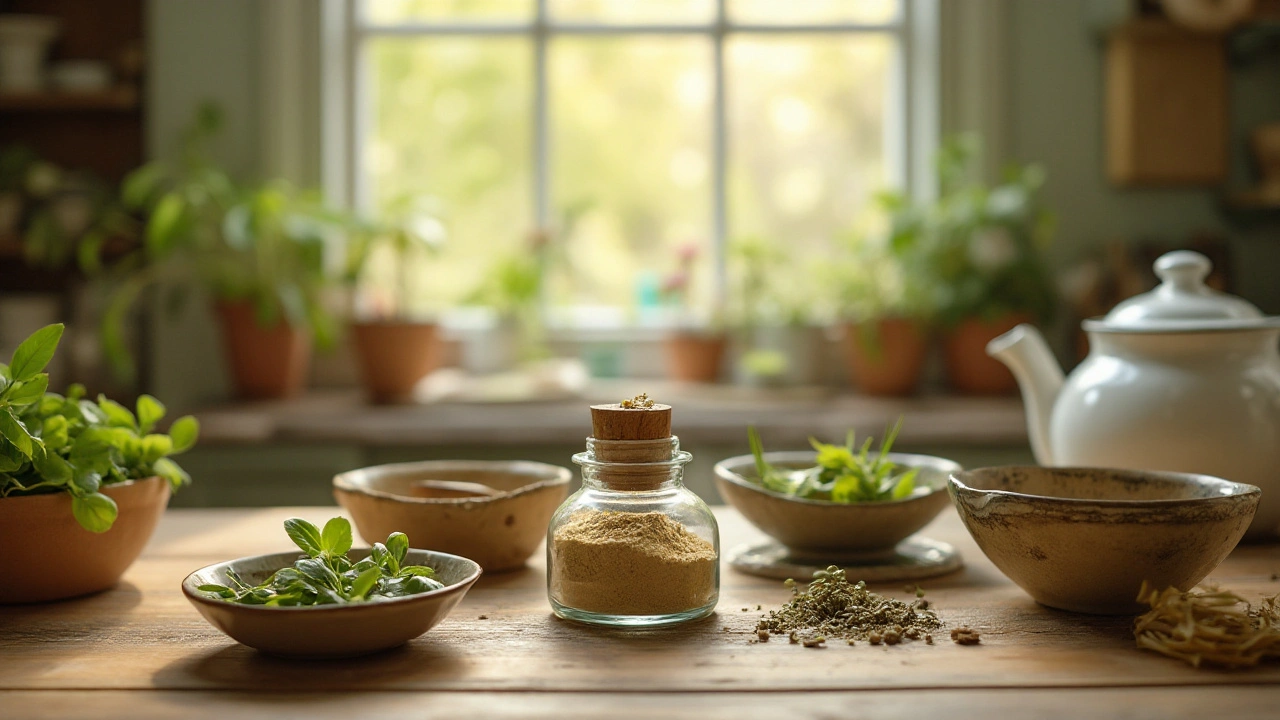Slippery elm (Ulmus rubra) is a tree whose inner bark has been used for centuries as a gentle remedy. The bark makes a slick, mucilage-rich mix that soothes irritated throats and gut lining. People use it for sore throats, mild reflux, diarrhea, and general stomach irritation. It’s not a miracle cure, but it’s a low-risk option many try before or alongside conventional treatments.
The bark contains mucilage — a sticky, gel-like fiber that coats mucous membranes. That coating can ease throat pain, reduce burning in the esophagus, and calm inflamed bowels for a short time. You’ll find slippery elm as tea, lozenges, powders, and capsules. Common uses include: easing sore throat, helping with mild heartburn or reflux, soothing irritable bowel symptoms, and softening stools during short bouts of diarrhea.
Tea: Mix 1–2 teaspoons of powdered inner bark in a cup of hot (not boiling) water. Stir until it forms a gel-like tea. Drink once or twice daily for symptom relief. Capsules: Typical capsule doses are 400–500 mg, taken up to three times a day. Lozenges: Use as directed on the label to soothe a sore throat. Always follow product instructions and start with the lowest recommended dose.
Timing matters if you take other medicines. The coating effect can lower absorption of some drugs. Take slippery elm at least 1–2 hours before or after prescription meds to be safe. If you’re pregnant, breastfeeding, or giving it to a child, check with your healthcare provider first — data during pregnancy is limited.
Side effects are uncommon but can include mild stomach upset or an allergic reaction. Powder can be thick — mix it well and drink plenty of water. People with severe allergies to trees or who have swallowing problems should avoid powdered forms that could cause choking.
Quality and sourcing matter. Wild slippery elm has been overharvested in some areas. Buy products labeled as inner bark from reputable suppliers, ideally with sustainable-harvest or organic claims. In Canada look for trusted health-food stores, licensed herbal retailers, or well-reviewed online sellers. Avoid products with unclear ingredient lists or fillers.
Practical tip: If you use slippery elm for throat relief, combine it with honey and warm water for a soothing drink (not for infants under 1 year). For digestive use, pair short courses of slippery elm with proven lifestyle steps — small meals, avoiding trigger foods, and staying hydrated.
If symptoms are severe, last more than a week, or include high fever, blood in stool, or trouble breathing, see a doctor. Slippery elm can help with mild, short-term irritation, but it doesn’t replace medical care for serious conditions.

Slippery Elm is a remarkable natural supplement that has been used for centuries to support digestive and overall health. Packed with mucilage, it helps soothe the digestive tract, alleviating symptoms of constipation, diarrhea, and irritable bowel syndrome. Additionally, its anti-inflammatory properties contribute to skin health and respiratory relief. This article explores the benefits, usage, and tips for incorporating Slippery Elm into your wellness routine.
View more